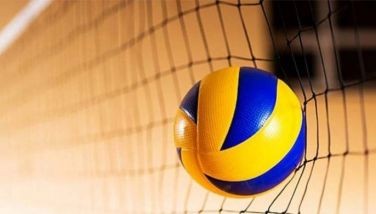Redesigning the human body
Sport is all about breaking the limits of the human body. The question we should be asking ourselves is whether or not it is possible to redesign the human form into one that can break barriers in different disciplines that have varying implications. Sports is one, but it may include other industries that require certain qualities humans have not developed, such as being able to breathe underwater for long periods of time, carry greater weights, see better in the dark, and so on.
Two years ago, tissue engineer Nina Tandon spoke about how it had become possible to generate personalized models of organs to test medicine on. This would solve the moral dilemma of human testing for new drugs. But it could also lead to ways to mask the use of illegal substances or certain medications, while it all sounds like science fiction now, a common thread in the scientific community is to eventually make it affordable for the greater majority of people.
David Moinina Sengeh of MIT’s Meida Lab’s Biomechatronics group, grew up in a civil war torn area of the Sierra Leone. Not only did he witness many of his countrymen torn apart by explosives, but in the aftermath, they were unable to live normal lives because of inappropriately-designed prosthetics. Consulting his mentors, he realized that there could not be a viable solution simply because no two amputees were alike. Socket joints were all different.
He may have found the solution.
“We are using advances in medical imaging and computer-aided design and manufacturing to create custom prosthetic sockets that are more comfortable. I use MRI images to develop models for each patient – making it possible for patients to send in scans from anywhere in the world – and from those results develop a multi-material 3D-printed prosthetic socket,†he explained in a recent interview, “Because this socket could be printed anywhere, it could also be immediately delivered to the patient. The 3D printing process allows us to use flexible, rubber-based materials over specific anatomical landmarks where pressure should be relieved. These products are being tested by patients, including US veterans. In one of our trials, an active veteran who has been an amputee for over 20 years said of a socket: “It’s so soft, it’s like walking on pillows.â€
Given this development, improvements in sports performances by the differently-abled will undoubtedly take a big leap forward. Eventually, the technology behind it may even cross over into minor replacement parts for regular athletes, creating true ‘bionic’ human.
“For me, a place to begin repairing the bodies and souls of those affected by war and disease is by designing comfortable and affordable interfaces that will help them take the step that moves them from disabled to living a meaningful and productive life,†Sengeh adds.
Now for the more mind-boggling advances. Craig Venter, founder of Celera Genomics, which collects genetic data from the world’s oceans, showed the world the first fully programmable cell that acts like hardware. You can introduce DNA and have it emerge as a different species. Simultaneously, research teams at MIT have been generating a registry of biological parts. Theoretically, within the next few years you can go out and get your DNA, proteins or any other genetic building block you need, and start building living tissue, and even whole creatures, similar to what Frankenstein did in fantasy. In 2006, they brought together high school students and college students and engineered odd new creatures which, like computer circuit boards, performed the functions they were designed to do.
“You saw this creature. An almost-extinct animal from Xochimilco, Mexico called an axolotl that can re-generate its limbs. You can freeze half its heart. It regrows. You can freeze half the brain. It regrows,†says Juan Enriquez, founding director of the Harvard Business School Life Sciences Project. “But now, you don’t have to have the animal itself to regenerate, because you can build cloned mice molars in Petri dishes. And, of course if you can build mice molars in Petri dishes, you can grow human molars in Petri dishes. This should not surprise you, right?
Taking it farther, some scientists have already been able to grow extra wings on chickens. While that may eventually do wonders for the fastfood industry if genetically-modified foods ever get that far, but imagine that happening to a human. Imagine a swimmer created with four arms instead of two, or a sprinter with four legs churning on the track. This is the kind of technology we are already at the brink of. But there’s more. Now we can turn one kind of tissue into another.
“This may be one of the ultimate papers. This was done in Japan and in the US, published at the same time, and it rebooted skin cells into stem cells,†Enriquez adds. “That meant that you can take the stuff right here, and turn it into almost anything in your body. And this is becoming common, it’s moving very quickly, it’s moving in a whole series of places.â€
There will be severe moral implications, of course, how much can you tinker with a human body? Motion pictures and literature have dealt with the gray areas surrounding organ replacement and cloning from Arnold Schwarzenegger’s “The Sixth Day†to the sci-fi thriller “The Islandâ€. We may have to deal with these issues sooner or later. On one hand, it may give some societies a huge boost. On the other, it could even be used to equalize the field.
- Latest
- Trending
































